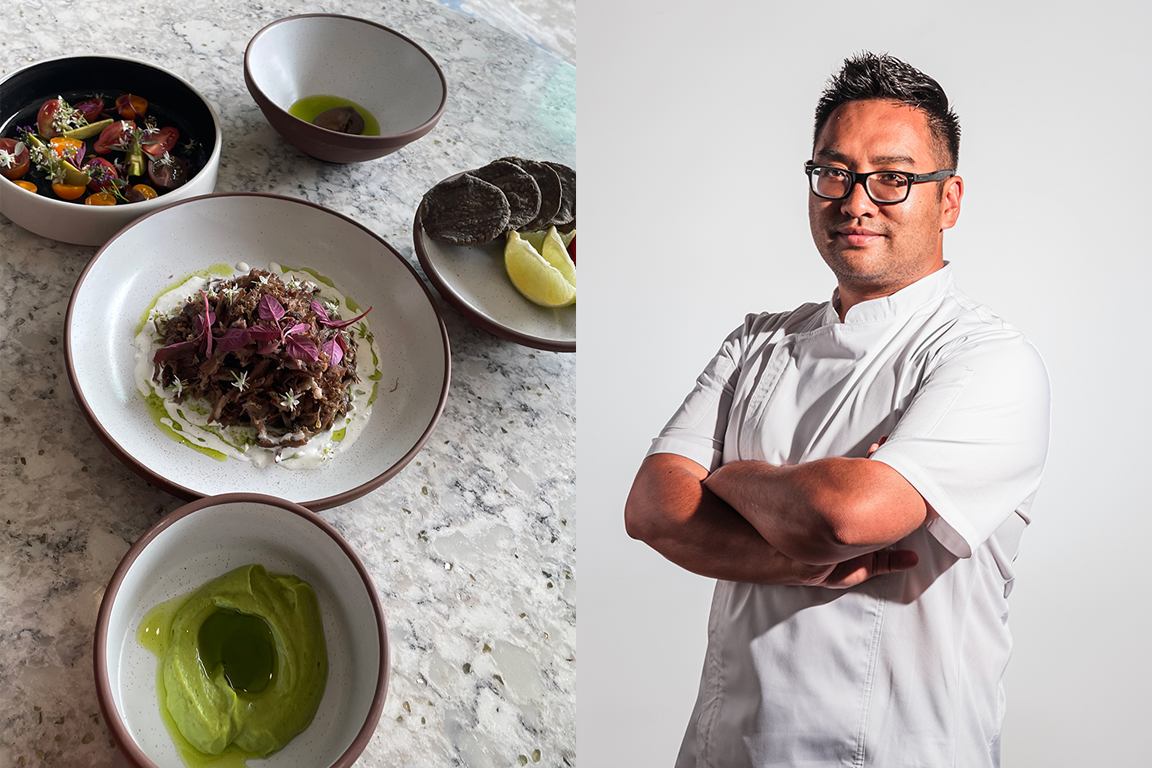
SPONSORED CONTENT
Tasting Toolbox: Building on Barbacoa
Bocuse d’Or Chef Marcelo Hisaki showcases Aussie lamb in a modern version
SPONSORED CONTENT
Tasting Toolbox: Building on Barbacoa
Bocuse d’Or Chef Marcelo Hisaki showcases Aussie lamb in a modern version
October 22, 2023
October 22, 2023
We’re still recovering a bit from a literal whirlwind of food professional events last month that included dodging two hurricanes on opposite coasts! The first was in San Diego for the Flavor Experience, always a highlight of the event calendar and per the usual, simply overflowing with food and flavor trends, tastes and insights from the Flavor & The Menu team. A special highlight for us was newly minted Aussie Beef Mate Chef Marcelo Hisaki from Restaurante Amores, and his “tasting toolbox.” In an impactful 10 minutes, he shared the story of authentic barbacoa from the mercado tradition of Mexico, and a modern creation of his own influenced by his Japanese heritage featuring Aussie lamb and a date mole negro. We followed up with him to get the details.
Q: What are the origins of barbacoa?
MH: It’s really an ancestor to what we think of today as barbeque – it’s even the same word! Slow-cooking meat over sticks and saplings was a common activity among indigenous Americans and Caribbeans. In the Caribbean, this style of cooking was known as “barbacoa” by the indigenous Taino people, which first appeared in the writings of Spanish explorers as early as the 16th century. The Taino were known to smoke and dry meat, and would often add salt and aromatic spices, then wrap the meat in leaves. Once it was time to cook it, they would place the meat among hot rocks and cover it, or cook the meat on a wood lattice over the fire, usually covered.
Q: What distinguishes barbacoa in Mexico?
MH: In Mexico maguey (agave) stalks are a multipurpose cooking ingredient, and we still use them today to cover the barbacoa meat and add subtle aromatics. This is a long process, so it’s typically reserved for celebrations, which is why we prefer to use lamb. It’s hard to beat lamb for a special feast! But historically you would cook anything this way — iguana, rabbit, armadillo, you name it.
Q: What was your inspiration for the dish you prepared for the tasting toolbox?
MH: Mercado means “market” and in particular the farmers market. Like a lot of chefs, I love going to local farmers markets everywhere I travel. In Mexico barbacoa is often prepared right at the mercado and sold with accompaniments like beans, tortillas and salsas. I combined that idea with another “special occasion” dish of Mexico in the black mole sauce. Rather than cover up the delicious natural flavor of the Australian lamb, we put the mole on the side as a condiment. For a local touch, I also used dates, which are grown in the San Diego area, in my mole.
Q: What did you like about the flavor combination?
MH: Australian lamb and mole are a fantastic combination, especially served this way. Mole is in many ways similar to curries or tagines from other parts of the world – all of them are combinations of seeds, nuts and dried fruits and chiles that have a lot of depth, and are made to marry with roasted meats. Aussie lamb has a beautifully clean, natural flavor that can take on complex flavors and really shine. I love it!
Aussome stuff, chef! We hope you have a blast on your trip Down Under, and can’t wait to see what’s next on the barbie.








